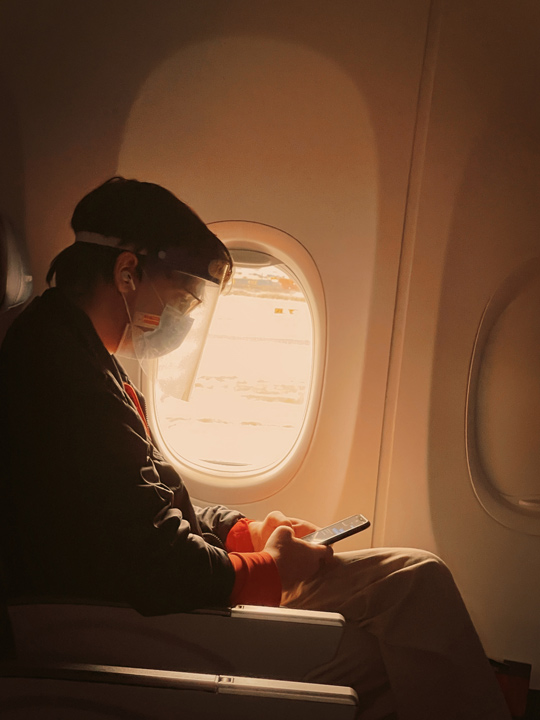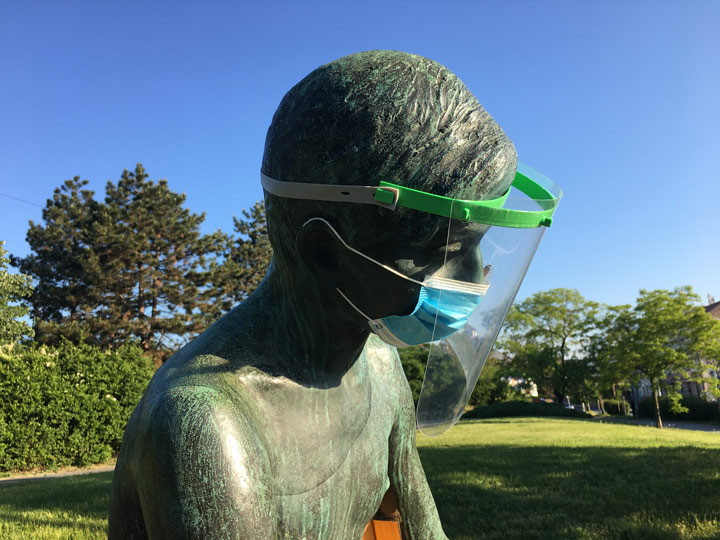Here’s some clarity to an ever-changing policy on this disease prevention tool.
READ ALSO: COVID Immunization: So You Are Fully Vaccinated—What Now?
To wear or not to wear face shields? There has been confusion recently about whether or not this personal protective equipment is still mandatory.

It all started with Department of Health (DOH) Undersecretary Leopoldo Vega that face shields are not required anymore in an open-air setting.
“Face shields are needed indoors, inside a mall or in a face-to-face interaction inside,” he said in Filipino in a June 16 Laging Handa briefing. “But outside, because we know that the risk of transmission is low and because moisture builds up when walking or while walking, you can take it off.”
The said statement comes amid calls to lift the policy that requires the use of face shields in public places.
Manila Mayor Isko Moreno, in early June, also urged national authorities to “rethink” the policy.
“The requirement for the general population to use face shields should be stopped, and these should just be used in hospitals to lessen the expenses and the problems of the public,” Moreno said in a statement written in Filipino on his Facebook page. “We might be the only country in the world that requires the use of face shields in the streets. We need to rethink this.”
Vega’s statement is also quite contradictory to the government’s reasoning behind the policy that’s “grounded on solid science,” according to a Facebook post by Infectious Diseases specialist Dr. Edsel Salvana, citing evidence “from India that wearing a face shield on top of a face mask reduced transmission in community healthcare workers who were going house to house to check on COVID-19 suspects.”
Neither the World Health Organization nor the United States Centers for Disease Control and Prevention, however, have recommendations on wearing face shields as a policy.
With these conflicting statements, we ask: Are face shields truly effective against COVID-19 and should it still be mandatory?
Perspective from experts
In a statement, the World Health Organization (WHO) has recognized that COVID-19 transmission by air is not entirely impossible.

“Short-range aerosol transmission, particularly in specific indoor locations, such as crowded and inadequately ventilated space over a prolonged period of time with infected persons cannot be ruled out,” WHO said almost a year after the COVID-19 outbreak.
The use of face shields then may not be beneficial to the general public. Joshua Agar, a civil engineer specializing in wind dynamics, says it makes people more vulnerable to the virus. It’s a finding he came up with based on computational fluid dynamics, which is a numerical simulation of wind flows.
In an illustration posted on his Facebook account, Agar sums up “the use of face shields in a nutshell.”
“[It] allows suction of the suspended particles into the head and face [and] allows the accumulation of the suspended particles near the face,” he writes. “[It also] allows deposition of the suspended particles near the face.”
This simply means that when air is introduced to face shields, it creates a negative pressure region beneath the said PPE that sucks in air which, if possibly carrying the virus, can cause COVID-19 infection.
Dr. Benjamin Co, an infectious disease expert, also echoes Agar’s sentiment in a separate Facebook post.
“I am not anti-face shield [but] let us make sure that it is used in the proper perspective and setting,” he writes. “There is a use for it, but making it mandatory may pose more harm than good, particularly for those who will not benefit in donning one. There is no solid evidence that supports it for the general public and is only recommendatory.”
On why healthcare workers in hospitals wear face shields, Agar and Co clarifies respectively that it tops off their full body PPE and that it protects the wearer from droplets that are considerably larger inside a COVID-19 facility, unlike outdoor settings.
More studies needed
Whether to drop the use of face shield or not needs more research. Even OCTA Research, an independent panel of researchers consistently providing insightful data analysis during the pandemic, are divided over the efficacy and practicality of face shields.
Ranjit Singhe Rye, a member of the research group, has said that “more work and data is needed to assess this particular intervention, this particular PPE (personal protective equipment) so we haven’t decided on a position yet.”
The group later expressed support for the government’s decision to retain the use of face shields indoors and outdoors, taking it “at face value that the study they made had basis.”
Face shields remain
And so the mandatory use of face shields remains.
“No single method can provide full protection against COVID-19,” DOH says in a press release. “[These] non-pharmacological interventions that, when consistently done and observed altogether, will significantly help reduce risk of COVID-19 transmission and infection.”
While they understand the concerns raised on the government’s policy on wearing of face shields and are open to dialogues in improving health policies, Health Undersecretary Maria Rosario Singh-Vergeire says they “cannot afford to relax the policies” given the current nationwide case trend, where the increase is slowly shifting in other regions outside NCR Plus.
Salvana adds that face shields provide eye protection, too, and prevent people from touching their faces and inadvertently pulling down their masks.
“Eye protection [also] decreases COVID-19 risk by 78 percent and in combination with physical distancing and masks can decrease risk by more than 90 percent,” he says. “Masks, face shield, physical distance, and good ventilation are part of the ‘Swiss Cheese’ model, which states that multiple layers of protection serve to further decrease the risk when imperfect interventions are used together.”
As variants like Delta are here which are more transmissible, Salvana reiterates that “this is not the time to relax protection in any way,” at least not until “more people are vaccinated.” At the moment, about 10,065,414 doses have been administered, according to DOH data. A total of 7,538,128 Filipinos have received their first dose and 2,527,286 million have been fully inoculated as of June 27. 2021.

Consistent with the statements from the Health department, the Palace, albeit seemingly going back and forth on the face shield policy, announced its final position on the matter last June 21.
Just hours after Presidential Spokesperson Harry Roque put an end to mandatory face shields outside enclosed spaces, President Rodrigo Duterte has announced that it is again a requirement whether indoors or outdoors, putting the discussion to rest—for now.
Banner Photo by Lawrence Aritao on Unsplash





